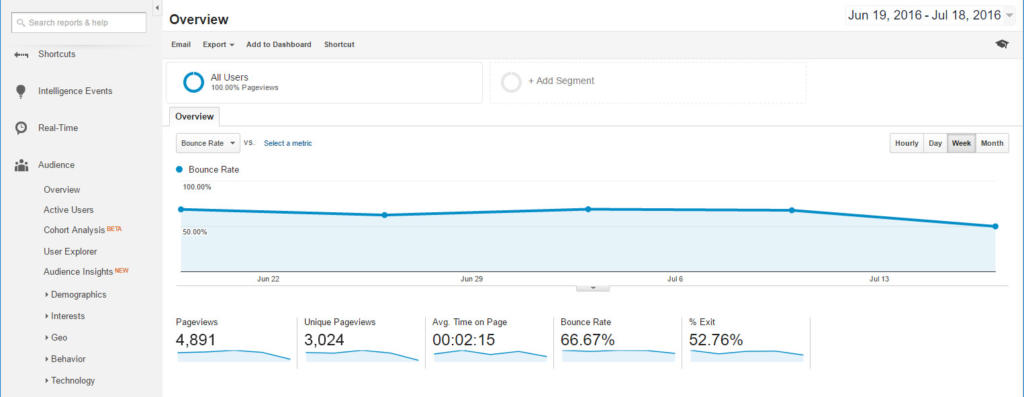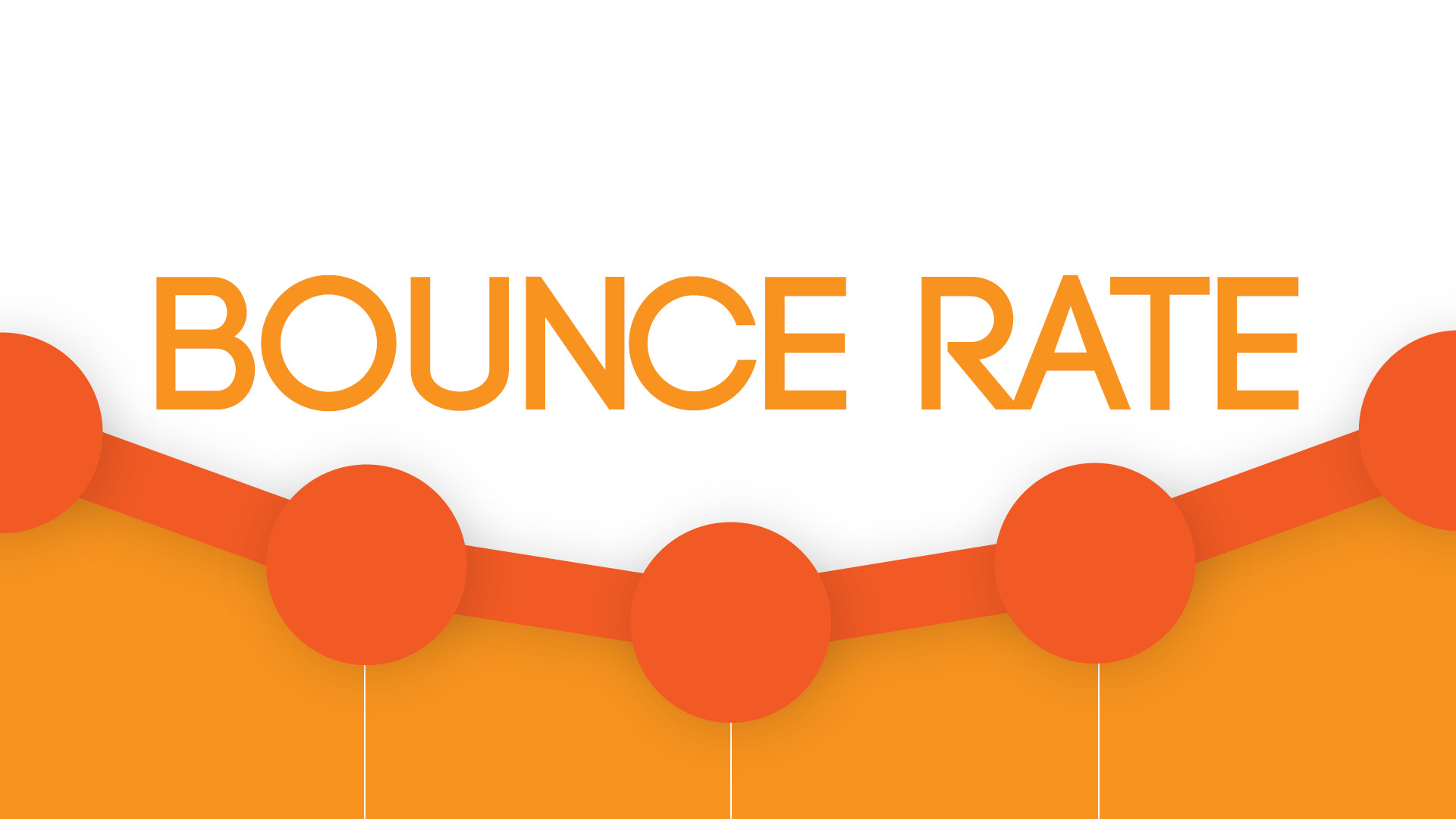In a previous post, we explained what bounce rate is. In this post, we want to give you a better idea of what a good bounce rate is. If you haven’t already read the post linked above, or just need a refresher on bounce rates, please click the link and read our post. Now, let’s try and describe what a good bounce rate is for your website. We’ll also explore some ideas on how your website can reduce your bounce rate.
What Is A Good Bounce Rate?
Depending on whom you ask, you may receive different answers as to what a good bounce rate is. There are several figures floating around, with many experts stating you should aim for a bounce rate of 40%. The problem with the numbers you may see scattered throughout the internet is that they are misleading. The truth is, a good bounce rate differs from site to site. There are a number of different factors that can play a part in deciding what a good bounce rate is for your website, such as your website or page type, industry, goals, and many more.
The following are good benchmarks to aim for depending on what kind of website you have:
- 10-30% Service websites (i.e. dentistry)
- 20-40% Retail websites (i.e. eCommerce site)
- 30-50% Lead Generation websites (i.e. website builders)
- 40-60% Content websites (i.e. online magazines)
- 70-90% Landing pages
- 70-98% Blogs
Using the benchmarks above, you should be able to compare your metrics to industry standards to determine if your website has a good bounce rate. If your bounce rate compares favorably, then visitors are navigating your website as intended. If your bounce rate does not compare favorably, then users are not finding what they are looking for or are having difficulty using your website. If that is the case, then you need to explore ways to reduce your bounce rate.

Google Analytics is a powerful tool that can produce reports on many metrics, including bounce rate.
How Can I Achieve A Good Bounce Rate?
Achieving a good bounce rate is absolutely critical when it comes to accomplishing your goals. Your bounce rate measures how engaged your website’s visitors are and by reducing it, you stand a better chance of converting visitors into customers. With that said, let’s discuss ways in which you can improve your bounce rate:
- Visitor Acquisition
You need to be using the right keywords for your content in order to attract the right visitors to your website. For more on keywords, read our post on keyword research. Another way to attract the right visitors is by writing useful meta descriptions for users of search engines like Google, Bing, or Yahoo. Meta descriptions are the 160-character page summaries that show up beneath links in search results. By default, these are constructed automatically using the first 160 characters displayed on that page. However, by writing more useful meta descriptions, you can give search engine users a better idea of what to expect. Another crucial method of improving visitor acquisition is by fine-tuning your online advertising campaigns. Are you targeting the right demographics? By following the steps above, you should be able to attract the right visitors to your website and reduce your bounce rate.
- Page Usability And Navigation
The next step in achieving a good bounce rate is improving the usability and navigation of your website. First, you’ll want to start by making sure the text on your website is readable. While this may seem like a no-brainer, you would be surprised to learn that it is not as simple as it sounds. Some guidelines to follow for improving text readability are:
- Maintaining a good contrast between text colors and backgrounds
- Using larger fonts
- Increasing headline size
- Implementing bulleted lists (like this one!)
Next, you’ll want to look at your website’s layout. Do you have navigation that is easy and intuitive for visitors to use? Do you have an easy way for users to search your website for content? Are you separating your content into sections, making it easier for visitors to differentiate between different pieces of content? Is your website responsive? Improving your layout is a must when it comes to achieving a good bounce rate. Other ways of boosting your website’s usability include optimizing pageload speed, setting external links to open in new windows, and minimizing or removing distracting advertisements. Improving the way users navigate your website is paramount to reducing your bounce rate.
- Content
The last method we are going to discuss today for achieving a good bounce rate is providing good content. If you’ve read our post on why content is the most important part of your website, you’ll understand the need to provide good content for your visitors. It is vital that your content is tailored to fit the right visitors. It’s not enough to attract the visitors you want; your website needs to provide content that addresses their needs. There are also ways you can adjust your content to make it more endearing to visitors. Utilizing eye-catching imagery and well-written copy is one way to keep users on your site. Other methods include using clear and concise headings and subheadings and proofreading your copy to make sure there are as few errors as possible. Aside from improving the quality of your content, you should also focus on defining what it is you want your content to accomplish. If the purpose of your content is to generate leads, then you should include clear calls to action on every page. If you want your content to engage visitors, you should make it easier for them to follow and interact with you. Providing good content that turns page visits into conversions is the hardest, yet most effective, method of reducing your bounce rate.
Hopefully, our post will give you a clearer picture of what a good bounce rate is and how you can achieve it. If you want to know more about how Business Website Builders can help your business, contact us today. We’re committed to helping your business thrive.
